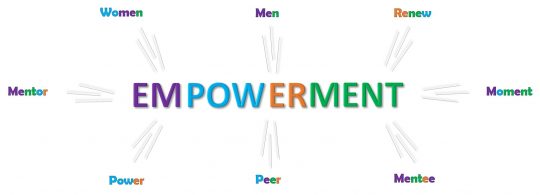Widgetized Section
Go to Admin » Appearance » Widgets » and move Gabfire Widget: Social into that MastheadOverlay zone
Empowerment, Growth and Trust: Lessons from a Five-Year-Old
The views expressed are those of the author and do not necessarily reflect the views of ASPA as an organization.
By LaMesha Craft
July 7, 2020
When explaining the importance of letting the workforce learn by completing tasks, I often use the analogy of teaching one’s child to tie his or her shoes. My son is 20 years old. But what I learned over 15 years ago while teaching him how to tie his shoes remains one of the most important lessons about empowerment, growth and trust that has served me well as a leader and a manager.

Patience is a Virtue
I remember the lack of patience I had when teaching him how to tie his shoes. I can see myself, standing by the front door, looking down at my son fumbling with his laces. The first few times, I bent down, took the laces from his plump little hands and said, “Watch this, are you watching? Look at my hands and say it with me … o-ver, un-der, pull-it-tight, make-a-bow, pull it through, to do it right! … Okay, you got it?” Then out the door we went.
A week later, while picking him up from school, I noticed a father putting on his daughter’s Velcro shoes. We made eye contact as I waited (impatiently) for my son to tie his shoes. The gentleman said, “Hey, after a couple weeks of sitting where you’re sitting, we said screw it, we’re getting her Velcros. Wayyy less frustrating!” I nodded in agreement, as my son eagerly attempted to tie his shoes.
I waved goodbye to the father and daughter, taking note of her cute little Velcro shoes. I then turned my attention to my son, who was eagerly going through the motions as he sang, “O-ver, un-der, pull-it-tight…” While watching my son, I realized two things: (1) there was absolutely no way I was going to buy my kid Velcro shoes and (2) my impatience was actually hindering his growth. My sense of urgency in the mornings was the result of my failure to build more time into our routine. I realized that allowing him to struggle and then accomplish a task was important to his self-confidence and independence. This concept of patience, self-reflection and encouragement holds true in the workforce.
We Learn from Failure, Not from Success
Some managers are hampering the next generation of leaders because they are not teaching them. Additionally, some leaders are overwhelmed by the sense of urgency, the fear of failure, the ill-fated need for perfection and the illusion that their method and solution is the best option. The “zero-fail” mentality, the failure to try, and the failure to admit failure are all destroying our capacity to be great!
To Empower is to Trust
As the majority of us find ourselves teleworking during the COVID-19 pandemic, the notion of trust, empowerment and team building may seem challenging. But this is the precise time to empower individuals and to build trust within teams. As Doug Sundheim opined, understanding good leadership and practicing it are two different things, especially in the face of uncertainty and one’s own anxiety.
To Empower is to Grow
Empowerment usually involves the sharing of power between a leader or someone of authority and one or more followers. In other words, as highlighted by Gill Hickman in his 2015 book Leading Organizations: Perspectives for a New Era (3rd edition), empowerment provides the follower with the confidence and the decisionmaking latitude, thereby gradually expanding his or her sphere of influence and sense of self-worth. Arguably, the concept of empowerment nearly contradicts the selfish need for control. However, leaders with patience and foresight will discover how empowering one or more employees can have a positive ripple effect within a team because it facilitates team cohesion and by extension, trust and growth.
The long-term benefits of empowerment also extend to the leader and the manager. When implemented correctly, empowerment provides freedom for the leader to focus on broader issues and his or her team becomes a potential source of trusted advisors.
Velcro or Laces?
When I decided to adjust the process for teaching my son to tie his shoes, I also realized there were at least three common methods for tying one’s shoe and I encouraged him to explore them. After allotting more time to our morning routine, my anxiety decreased, while his creativity and self-confidence increased.
Fifteen years later, I still apply those lessons. When leading or managing personnel I ask myself:
Is your frustration really their problem, or could it be yours? If you’re not confident they will succeed, is it because of your selfish need for control? Have you empowered your team?
Undoubtedly, those answers may vary. However, one fact remains: The only way to know your team’s potential is to let them complete the task.
Author: LaMesha “MeMe” Craft, Ph.D., is a faculty member at the National Intelligence University and an adjunct professor at Tiffin University. Her research interests include community resilience, disaster risk reduction, leadership, impacts of disruptive technology, alternative futures, and post-normal times. She may be reached at [email protected] or @DrLCraft20


Lori Hardesty
July 24, 2020 at 8:06 am
I loved this post, one that combined our personal and professional lives. Thank you for sharing!